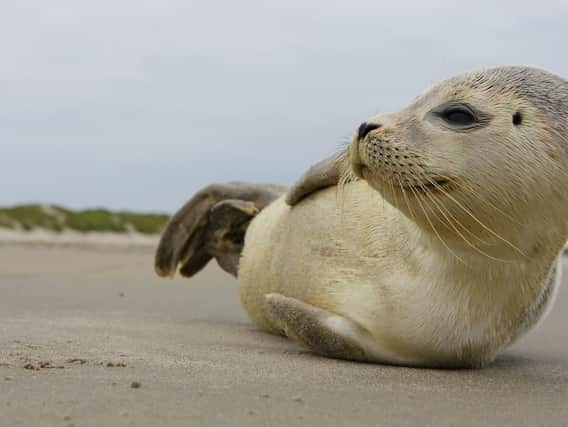Holland's holiday island haven


Friesian to most Brits is something to do with monochrome cows from somewhere in Holland.
Mention the Friesian islands – and in particular the sausage-shaped island of Terschelling and you’d probably get blank looks.
Advertisement
Hide AdAdvertisement
Hide AdBritish visitors to the island are indeed rare. It wasn’t always so – in 1666, during an Anglo-Dutch trade war, the English navy ransacked and set fire to the main town / port, of Terschelling, largely destroying the Netherlands’ merchant fleet. (The Great Fire of London a few months later was regarded, by the Dutch, as Divine retribution for the English attack).


Fast forward 352 years and these days Terschelling is one of northern Europe’s holiday playgrounds, popular with the Dutch as well as German and Belgian tourists.
The attractions are many. Great and non-busy sandy beaches, a micro-climate which makes sunny weather more likely than other parts of the Netherlands, wildlife (especially for bird lovers), a proud and active nautical heritage, and cycling.
Like much of the rest of the Netherlands, Terschelling is flat, which makes cycling easy. Most of the island is covered with a criss-cross of cycle-paths. There are cycle hire shops in all the villages at reasonable rates.
Advertisement
Hide AdAdvertisement
Hide AdThe northern coast (glorious golden beaches next to the North Sea) is popular with families. The various little resort communities on the northern coast, most with a beach café, are popular with families picnicking, teenagers frisbeeing, sandsurfers in sand-yachts, paddlers paddling, brave souls swimming and “strandloping” (beachcombing).


The southern shore (facing the Wadden Sea and the Dutch/Friese mainland) is the place to spot wildlife. All kinds of wading birds can be seen as well as, occasionally, sea-lions, on the mudflats.
The south coast is also the place to observe decades-old commercial and leisure craft, under sail, gently plying either between the other Friesian islands (variously Dutch, German or Danish) or making their way around the ports of northern Europe. (A century ago, just before World War One novelist Erskine Childers chose the islands for his great nautical spy novel, Riddle of the Sands).
West Terschelling, the capital is the only town on the island (the handful of other communities are villages or hamlets). ‘West’ as the capital is known resembles Glasson Dock meeting an upmarket Cleveleys. At its centre is the Brandaris, a centuries-old square lighthouse, towering 170 ft which makes it one of the main landmarks of the island.
Advertisement
Hide AdAdvertisement
Hide AdThe nautical element at West is prominent with an extensive marina filled with costly craft, all close to the older harbourside where trawlers land their catch and old boats take tourists on trips into the Wadden Sea.


West is also the only port on the island. Passengers arrive from Harlingen via the Rederij Doeksen Ltd’s ferries, from the mainland port of Harlingenhaven. There are several sailings every day of the year, especially in summer, and there’s a choice of a just under an hour fastboat, or a leisurely two hour trip.
Even with the island’s big tourist influx every summer Terschelling never seems crowded. The bigger ferries take cars, but it is probably easier (and cheaper) to leave your car at one of the many parking lots on the mainland and hire a bike (a “fiets” in Dutch) when you arrive. The “laid back” atmosphere of the island applies to all aspects of the lifestyle, including transport.
The cycle network can be easily circumnavigated in a day, but going at a leisurely pedal pace you can take time to explore the villages and beaches. A working windmill at Formerum has been turned into a café (Koffiemolen), close by there is a museum (the Wrakken Museum), dedicated to finds from the scores of shipwrecks on Terschelling’s beaches over decades. Cycling to the museum you’ll pass a statue of William Barents, the island-born Arctic navigator after whom the Barents Straits is named.
Advertisement
Hide AdAdvertisement
Hide AdRemember the fact that the island is flat makes for easy cycling, so no need to worry about exhaustion or big hills.
Terschelling was occupied by the Germans during the wars, and there are still some of their bunkers on the coast, some converted into summer houses.
The main language here is Dutch, with a smattering of the old Friesian (the latter being more used on the northern Netherlands mainland). But almost everyone has a good command of English, so there are few communications problems with the friendly locals.
Take time to look around all the island communities…each of the villages has a special attraction. One of them is, unusually Europe, cranberry growing and harvesting, with several cranberry farms and mini-factories farms open for viewing.
Advertisement
Hide AdAdvertisement
Hide AdEating out is easy. The island has everything from top class restaurants (many obviously specialising in sea fare), to attractive cafes, beach cafes (strand cafes) and snackbars.
* Getting there: fly from Liverpool or Manchester to Schipol Airport; train ticket at Schipol rail station to Harlingenhaven (you may have to change trains at Zwolle, and will have to change at Leuwarden for Harlingenhaven). At Harlingenhaven station walk to the nearby Rederij Doeksen ferry office for tickets).
Accommodation: There are scores of hotels and B&Bs. I stayed at the Inn of the White Hand in Midsland, a village a 10 minute bus ride from the ferry dock (if you hire a bike most hire points have a free baggage drop service to hotels on the island).
Useful links:
www.vvvterschelling.nl/en/www.rederij-doeksen.nl/terschellinghttps://indewittehandt.nl/